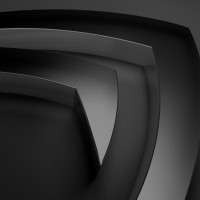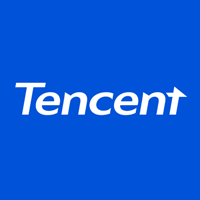Albumentations

Detalles del producto
Casos de Uso
Hablar con el vendedor
Planes de soporte
Actualmente no hay planes OSS disponibles
Si eres proveedor o colaborador del repositorio, puedes comenzar a agregar tu plan OSS.
Añadir un plan OSSContáctenos www.piecex.com/contacts si está buscando un plan para este código abierto. Le ayudaremos a ponerse en contacto con proveedores profesionales.
Detalles del producto
Albumentations
Docs | Discord | Twitter | LinkedIn
Albumentations is a Python library for image augmentation. Image augmentation is used in deep learning and computer vision tasks to increase the quality of trained models. The purpose of image augmentation is to create new training samples from the existing data.
Here is an example of how you can apply some pixel-level augmentations from Albumentations to create new images from the original one:

Why Albumentations
- Complete Computer Vision Support: Works with all major CV tasks including classification, segmentation (semantic & instance), object detection, and pose estimation.
- Simple, Unified API: One consistent interface for all data types - RGB/grayscale/multispectral images, masks, bounding boxes, and keypoints.
- Rich Augmentation Library: 70+ high-quality augmentations to enhance your training data.
- Fast: Consistently benchmarked as the fastest augmentation library, with optimizations for production use.
- Deep Learning Integration: Works with PyTorch, TensorFlow, and other frameworks. Part of the PyTorch ecosystem.
- Created by Experts: Built by developers with deep experience in computer vision and machine learning competitions.
Community-Driven Project, Supported By
Albumentations thrives on developer contributions. We appreciate our sponsors who help sustain the project's infrastructure.
| 🏆 Gold Sponsors |
|---|
| Your company could be here |
| 🥈 Silver Sponsors |
|---|
 |
| 🥉 Bronze Sponsors |
|---|
 |
💝 Become a Sponsor
Your sponsorship is a way to say "thank you" to the maintainers and contributors who spend their free time building and maintaining Albumentations. Sponsors are featured on our website and README. View sponsorship tiers on GitHub Sponsors
Table of contents
- Albumentations
- Why Albumentations
- Community-Driven Project, Supported By
- 💝 Become a Sponsor
- Table of contents
- Authors
- Current Maintainer
- Emeritus Core Team Members
- Installation
- Documentation
- A simple example
- Getting started
- I am new to image augmentation
- I want to use Albumentations for the specific task such as classification or segmentation
- I want to know how to use Albumentations with deep learning frameworks
- I want to explore augmentations and see Albumentations in action
- Who is using Albumentations
- See also
- List of augmentations
- Pixel-level transforms
- Spatial-level transforms
- A few more examples of augmentations
- Semantic segmentation on the Inria dataset
- Medical imaging
- Object detection and semantic segmentation on the Mapillary Vistas dataset
- Keypoints augmentation
- Benchmarking results
- System Information
- Benchmark Parameters
- Library Versions
- Performance Comparison
- Contributing
- Community
- Citing
Authors
Current Maintainer
Vladimir I. Iglovikov | Kaggle Grandmaster
Emeritus Core Team Members
Mikhail Druzhinin | Kaggle Expert
Alexander Buslaev | Kaggle Master
Eugene Khvedchenya | Kaggle Grandmaster
Installation
Albumentations requires Python 3.9 or higher. To install the latest version from PyPI:
pip install -U albumentationsOther installation options are described in the documentation.
Documentation
The full documentation is available at https://albumentations.ai/docs/.
A simple example
import albumentations as A
import cv2
# Declare an augmentation pipeline
transform = A.Compose([
A.RandomCrop(width=256, height=256),
A.HorizontalFlip(p=0.5),
A.RandomBrightnessContrast(p=0.2),
])
# Read an image with OpenCV and convert it to the RGB colorspace
image = cv2.imread("image.jpg")
image = cv2.cvtColor(image, cv2.COLOR_BGR2RGB)
# Augment an image
transformed = transform(image=image)
transformed_image = transformed["image"]Getting started
I am new to image augmentation
Please start with the introduction articles about why image augmentation is important and how it helps to build better models.
I want to use Albumentations for the specific task such as classification or segmentation
If you want to use Albumentations for a specific task such as classification, segmentation, or object detection, refer to the set of articles that has an in-depth description of this task. We also have a list of examples on applying Albumentations for different use cases.
I want to know how to use Albumentations with deep learning frameworks
We have examples of using Albumentations along with PyTorch and TensorFlow.
I want to explore augmentations and see Albumentations in action
Check the online demo of the library. With it, you can apply augmentations to different images and see the result. Also, we have a list of all available augmentations and their targets.
Who is using Albumentations
See also
List of augmentations
Pixel-level transforms
Pixel-level transforms will change just an input image and will leave any additional targets such as masks, bounding boxes, and keypoints unchanged. The list of pixel-level transforms:
- AdditiveNoise
- AdvancedBlur
- AutoContrast
- Blur
- CLAHE
- ChannelDropout
- ChannelShuffle
- ChromaticAberration
- ColorJitter
- Defocus
- Downscale
- Emboss
- Equalize
- FDA
- FancyPCA
- FromFloat
- GaussianBlur
- GlassBlur
- HistogramMatching
- HueSaturationValue
- ISONoise
- Illumination
- ImageCompression
- InvertImg
- MedianBlur
- MotionBlur
- MultiplicativeNoise
- Normalize
- PixelDistributionAdaptation
- PlanckianJitter
- PlasmaBrightnessContrast
- PlasmaShadow
- Posterize
- RGBShift
- RandomBrightnessContrast
- RandomFog
- RandomGamma
- RandomGravel
- RandomRain
- RandomShadow
- RandomSnow
- RandomSunFlare
- RandomToneCurve
- RingingOvershoot
- SaltAndPepper
- Sharpen
- ShotNoise
- Solarize
- Spatter
- Superpixels
- TemplateTransform
- TextImage
- ToFloat
- ToGray
- ToRGB
- ToSepia
- UnsharpMask
- ZoomBlur
Spatial-level transforms
Spatial-level transforms will simultaneously change both an input image as well as additional targets such as masks, bounding boxes, and keypoints. The following table shows which additional targets are supported by each transform.
A few more examples of augmentations
Semantic segmentation on the Inria dataset
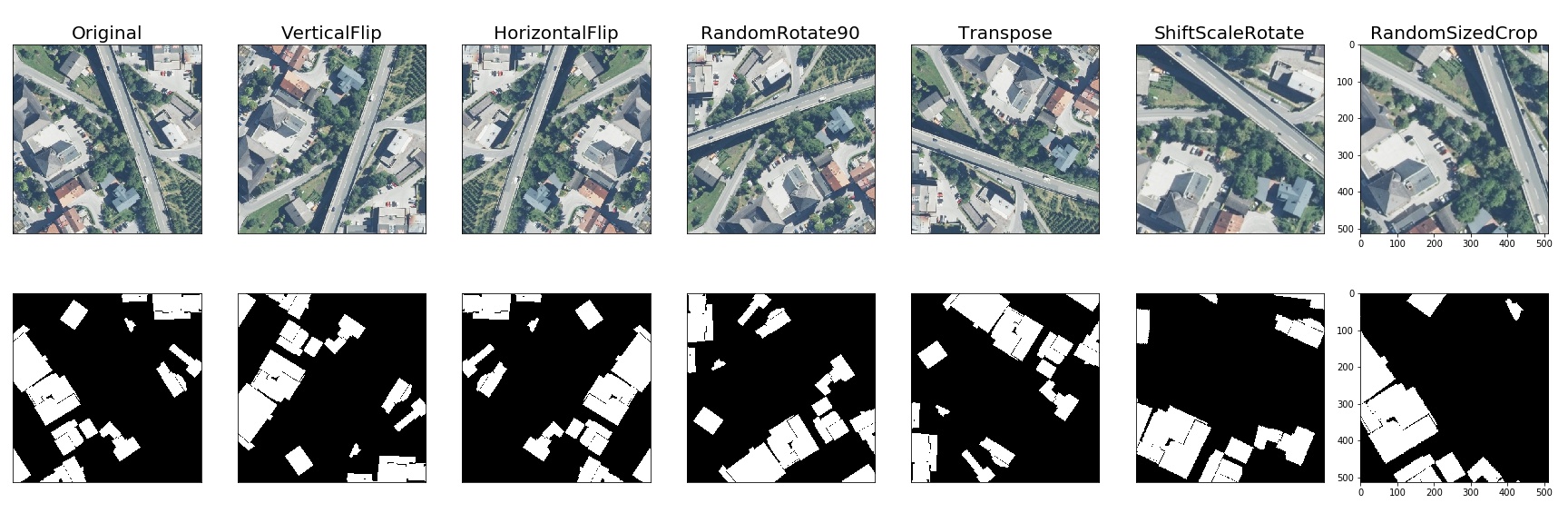
Medical imaging
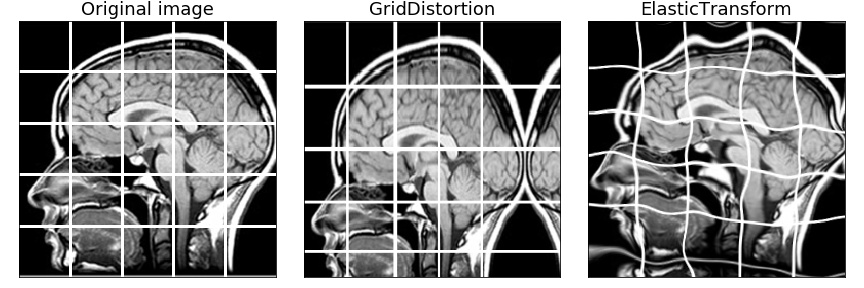
Object detection and semantic segmentation on the Mapillary Vistas dataset
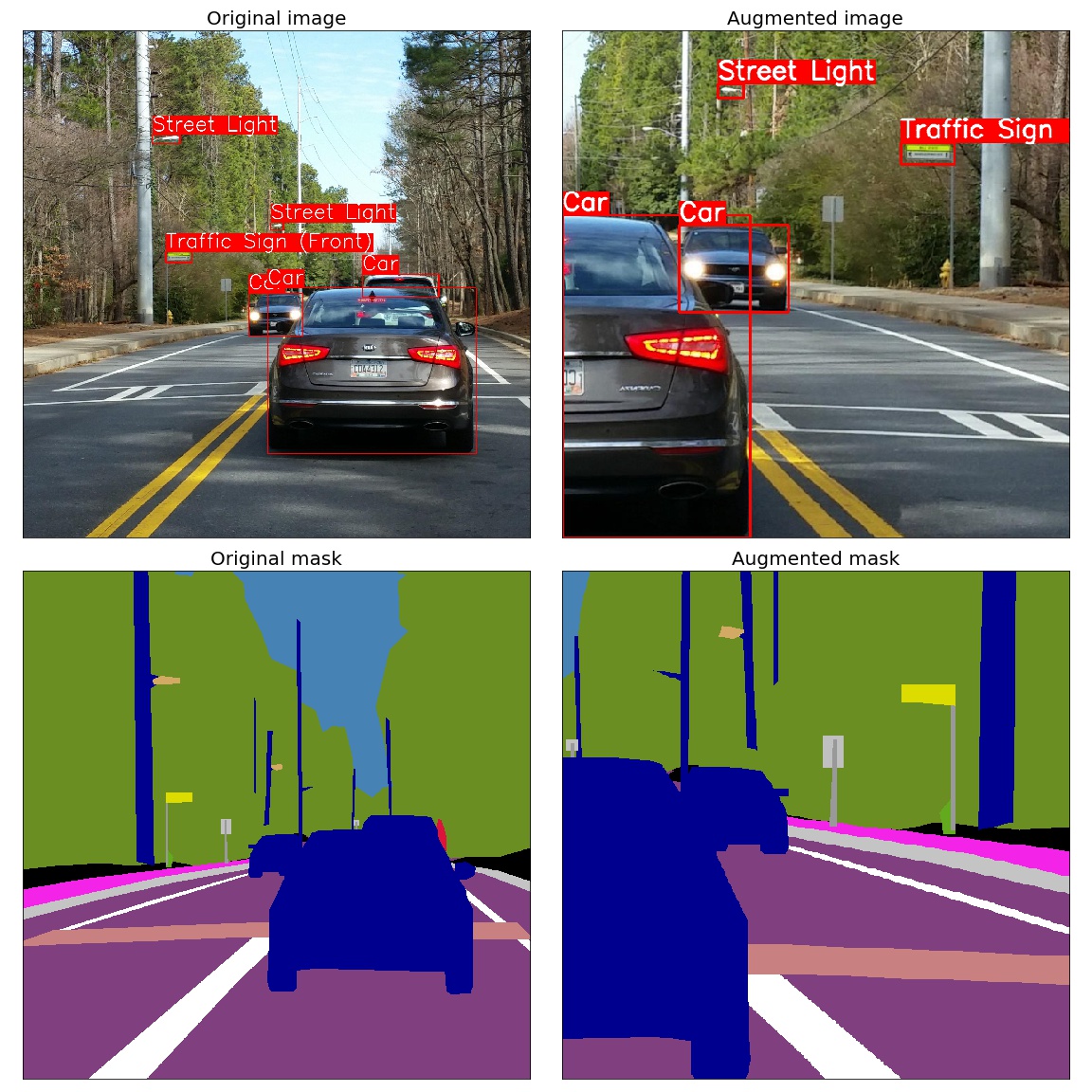
Keypoints augmentation
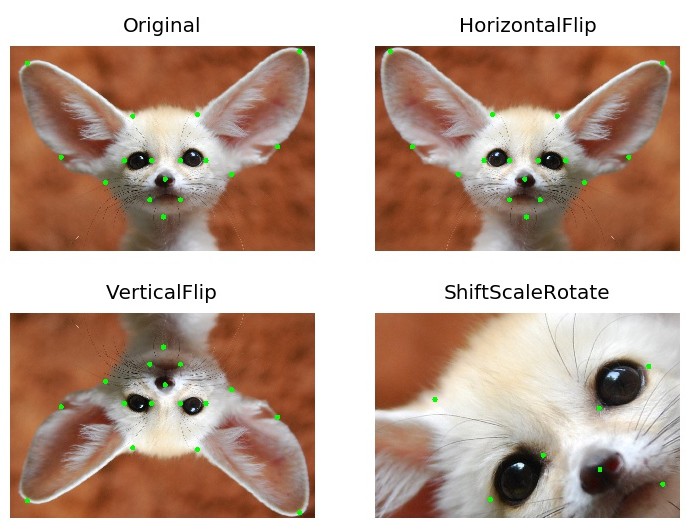
Benchmarking results
System Information
- Platform: macOS-15.0.1-arm64-arm-64bit
- Processor: arm
- CPU Count: 10
- Python Version: 3.12.7
Benchmark Parameters
- Number of images: 1000
- Runs per transform: 10
- Max warmup iterations: 1000
Library Versions
- albumentations: 1.4.20
- augly: 1.0.0
- imgaug: 0.4.0
- kornia: 0.7.3
- torchvision: 0.20.0
Performance Comparison
Number - is the number of uint8 RGB images processed per second on a single CPU core. Higher is better.
| Transform | albumentations 1.4.20 |
augly 1.0.0 |
imgaug 0.4.0 |
kornia 0.7.3 |
torchvision 0.20.0 |
|---|---|---|---|---|---|
| HorizontalFlip | 8618 ± 1233 | 4807 ± 818 | 6042 ± 788 | 390 ± 106 | 914 ± 67 |
| VerticalFlip | 22847 ± 2031 | 9153 ± 1291 | 10931 ± 1844 | 1212 ± 402 | 3198 ± 200 |
| Rotate | 1146 ± 79 | 1119 ± 41 | 1136 ± 218 | 143 ± 11 | 181 ± 11 |
| Affine | 682 ± 192 | - | 774 ± 97 | 147 ± 9 | 130 ± 12 |
| Equalize | 892 ± 61 | - | 581 ± 54 | 152 ± 19 | 479 ± 12 |
| RandomCrop80 | 47341 ± 20523 | 25272 ± 1822 | 11503 ± 441 | 1510 ± 230 | 32109 ± 1241 |
| ShiftRGB | 2349 ± 76 | - | 1582 ± 65 | - | - |
| Resize | 2316 ± 166 | 611 ± 78 | 1806 ± 63 | 232 ± 24 | 195 ± 4 |
| RandomGamma | 8675 ± 274 | - | 2318 ± 269 | 108 ± 13 | - |
| Grayscale | 3056 ± 47 | 2720 ± 932 | 1681 ± 156 | 289 ± 75 | 1838 ± 130 |
| RandomPerspective | 412 ± 38 | - | 554 ± 22 | 86 ± 11 | 96 ± 5 |
| GaussianBlur | 1728 ± 89 | 242 ± 4 | 1090 ± 65 | 176 ± 18 | 79 ± 3 |
| MedianBlur | 868 ± 60 | - | 813 ± 30 | 5 ± 0 | - |
| MotionBlur | 4047 ± 67 | - | 612 ± 18 | 73 ± 2 | - |
| Posterize | 9094 ± 301 | - | 2097 ± 68 | 430 ± 49 | 3196 ± 185 |
| JpegCompression | 918 ± 23 | 778 ± 5 | 459 ± 35 | 71 ± 3 | 625 ± 17 |
| GaussianNoise | 166 ± 12 | 67 ± 2 | 206 ± 11 | 75 ± 1 | - |
| Elastic | 201 ± 5 | - | 235 ± 20 | 1 ± 0 | 2 ± 0 |
| Clahe | 454 ± 22 | - | 335 ± 43 | 94 ± 9 | - |
| CoarseDropout | 13368 ± 744 | - | 671 ± 38 | 536 ± 87 | - |
| Blur | 5267 ± 543 | 246 ± 3 | 3807 ± 325 | - | - |
| ColorJitter | 628 ± 55 | 255 ± 13 | - | 55 ± 18 | 46 ± 2 |
| Brightness | 8956 ± 300 | 1163 ± 86 | - | 472 ± 101 | 429 ± 20 |
| Contrast | 8879 ± 1426 | 736 ± 79 | - | 425 ± 52 | 335 ± 35 |
| RandomResizedCrop | 2828 ± 186 | - | - | 287 ± 58 | 511 ± 10 |
| Normalize | 1196 ± 56 | - | - | 626 ± 40 | 519 ± 12 |
| PlankianJitter | 2204 ± 385 | - | - | 813 ± 211 | - |
Contributing
To create a pull request to the repository, follow the documentation at CONTRIBUTING.md
Community
Citing
If you find this library useful for your research, please consider citing Albumentations: Fast and Flexible Image Augmentations:
@Article{info11020125,
AUTHOR = {Buslaev, Alexander and Iglovikov, Vladimir I. and Khvedchenya, Eugene and Parinov, Alex and Druzhinin, Mikhail and Kalinin, Alexandr A.},
TITLE = {Albumentations: Fast and Flexible Image Augmentations},
JOURNAL = {Information},
VOLUME = {11},
YEAR = {2020},
NUMBER = {2},
ARTICLE-NUMBER = {125},
URL = {https://www.mdpi.com/2078-2489/11/2/125},
ISSN = {2078-2489},
DOI = {10.3390/info11020125}
}









